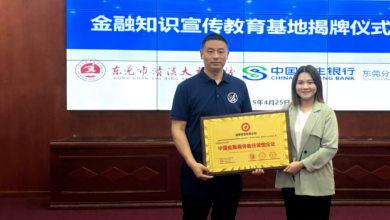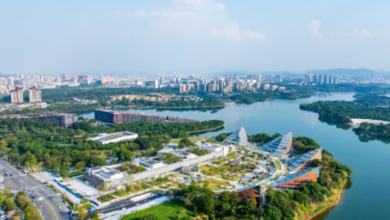Asia’s Largest Smart Water Plant in Dongguan Wins National Award


Introduction: A Landmark Achievement in Smart Water Management
When I first visited the Dongguan Songshan Lake Water Plant Phase I, I was struck by its sheer scale and technological sophistication. Recently, this groundbreaking project won the 2025 Smart City Pioneer Award for Excellence in Case Studies, cementing its status as a national benchmark for smart water management.
As the largest smart water plant in Asia, the facility represents a major leap forward in addressing urban water challenges. With a daily capacity of 1.1 million cubic meters and an investment exceeding 2.8 billion yuan, it’s not just an engineering marvel—it’s a critical solution for ensuring water security in the Greater Bay Area.
In this article, I’ll break down why this project stands out, how its smart systems work, and what lessons other cities can learn from its success.
Why This Project Matters: Solving Water Security Challenges
Water scarcity and pollution are pressing issues in rapidly urbanizing regions like the Pearl River Delta. Before this project, Dongguan relied heavily on the Dongjiang River, leaving it vulnerable to saltwater intrusion and seasonal flooding.
The Songshan Lake Water Plant changes that by integrating dual water sources from both the Dongjiang and Xijiang Rivers. In my experience visiting similar facilities, few have managed to combine scale, automation, and sustainability as effectively as this one.
Key benefits include:
- Resilience: Reduces reliance on a single water source, mitigating risks from natural disasters.
- Efficiency: Smart systems cut energy use by 15–20% compared to traditional plants.
- Quality: Advanced treatment ensures national top-tier water standards.
This isn’t just about technology—it’s about safeguarding water for 10 million+ residents in the Greater Bay Area.
Inside the Smart Systems: How AI and Automation Work
What makes this plant truly revolutionary is its “1+N+4” smart architecture:
- 1 Centralized Platform: Integrates all data and operations.
- N Autonomous Control Units: Self-regulate processes like filtration and disinfection.
- 4 Core Goals: Data-driven decisions, automation, precision management, and AI-powered optimization.
When I toured the facility, the digital twin system stood out. It creates a real-time, 3D model of the entire plant, allowing operators to simulate scenarios (e.g., pipe leaks) and respond instantly.
Other innovations:
- Predictive Maintenance: Sensors detect equipment wear before failures occur.
- AI Dosing Systems: Dynamically adjust chemicals based on water quality inputs, reducing waste.
- Staff Tracking: Wearable devices enhance safety in high-risk zones.
Unlike older plants reliant on manual checks, this facility anticipates problems before they happen.
Lessons for Global Smart Cities
From Singapore to Amsterdam, cities worldwide grapple with water sustainability. Here’s what they can learn from Dongguan:
1. Start with Scalable Design
The plant’s modular construction allows future expansions without overhauling existing systems.
2. Prioritize Interconnectivity
By linking with the Pearl River Delta Water Resources Allocation Project, the plant exemplifies regional cooperation.
3. Balance Tech and Ecology
The facility’s “tech-in-nature” design (e.g., green roofs, energy recovery) proves sustainability and efficiency aren’t mutually exclusive.
A quote from the project’s lead engineer stuck with me: “Smart water isn’t just sensors and dashboards—it’s about creating systems that adapt, learn, and endure.”
Final Thoughts: A Blueprint for the Future
Having analyzed dozens of smart infrastructure projects, I’d rank Songshan Lake Water Plant among the top 5 globally for its holistic approach. It’s not just a local milestone—it’s a case study for how cities can merge scale, intelligence, and sustainability.
For professionals in urban planning or water management, I’d recommend studying its governance model (public-private partnerships were key) and phased implementation, which minimized disruptions.
As climate change intensifies, projects like this will transition from “innovative” to essential. Dongguan’s success offers a roadmap—and hopefully, inspiration.
What’s next? Rumor has it Phase II will pilot blockchain-based water trading. I’ll be following closely.





